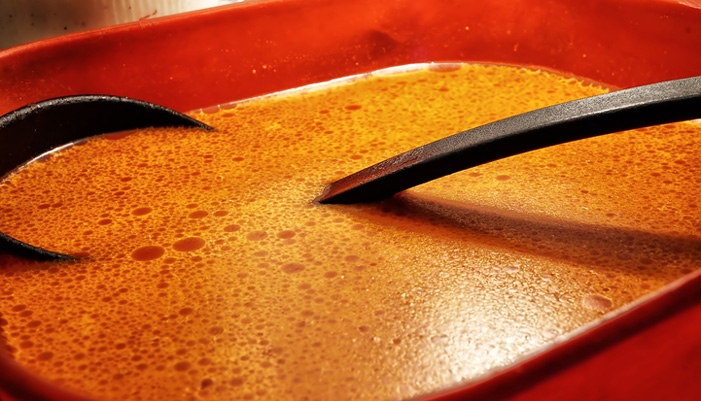Now that winter has finally arrived with her blustery temperatures and billowing snow drifts, it seems more likely that we would be drawn to Nature’s “winter foods,” which include soups, stews, cheeses, nuts, seeds, and oils. The fortunate few who have headed south for the winter or live in warmer climates, year round, may not crave these winter foods, as readily, as their climate may not be as cold and dry.

Winter foods offer “insulating” properties by virtue of their higher protein and fat content. Winter food choices tend to be denser and less “cooling” than foods we are drawn to during summer’s warmer months, like ice cream and cold lemonade. This time of year our “insides” have an affinity toward warmer foods, like a warm winter hat, coat, and gloves. Later in spring, our bodies naturally start craving greens and berries to help us eliminate excess winter fat reserves.
In Ayurvedic Medicine, there are three Seasons of life: Winter, Spring, and Summer. Not only does Ayurvedic Medicine delineate our foods by these three seasons, but also our body types—although we are frequently a combination of one or two body types, rather than a single body type. Ayurvedic Medicine even sees the stages of human life in terms of seasons. Birth, childhood, and adolescence are often referred to as the “springtime” of life. Young and middle life years correspond to the “summer” of life, with highly active lifestyles, raising families, and pursuing careers. Older adulthood mimics the “winter” of life, becoming more introspective and spiritual in later years. If you are interested in learning more about your body type as seen through the “eyes” of Ayurvedic Medicine, go to http://lifespa.com/superfoods-body-type-winter-edition. John Doulliard practices Ayurvedic Medicine and his website offers an online questionnaire to determine your body type.
Now back to winter foods . . .
Depending on your body type, winter foods have varying implications for your body. Overall, winter foods include nuts and seeds (seeds are easier to digest and both are high in protein and fat); animal protein (the acidity of animal protein is stored more efficiently in your tissues than plant protein); coconut oil (microbial scrub for gut and feeds brain) and olive oil (filled with antioxidants); avocados (85% fat and harvested during winter months in warmer climates); butter, buttermilk, cream, and ghee (particularly good for your immune system and your gut health) and licorice and cinnamon teas (which boost circulation and lubricate the intestinal wall).
Additional “winter” foods that can be use in cooking and satisfy a sweet tooth include:
- Carrots
- Sweet potatoes
- Winter squash
- Artichokes(helps support liver function and promote bile flow)
- Beets (helps boost bile flow and digestive enzyme production)
- Kale (cooked, helps support liver function and detoxification)
- Apples (cooked in winter, helps to flush congested liver and gallbladder)
- Dates
- Figs
- Tangerines
- Grapefruit (helps boost immunity and circulation)
- Pumpkin
RECIPE
Butternut and Apple Harvest Soup
(Prep 30 min, Cook 35 min)
2 Tbsp butter
2 large leeks (white and pale green parts)
1 large onion
1 large potato, cubed
2 cups butternut squash, cubed
1 cup diced carrots
1 Granny Smith apple, peeled and sliced 1/4 inch thick
1 qt chicken stock
1/4 cup white wine (optional)
1/2 cup light cream
1/4 tsp nutmeg
salt and pepper, to taste
2 Tbsp chopped chives
- Melt butter and sauté leeks and onion until translucent, about 5 minutes
- Add potato, squash, carrots, apple and chicken stock. Bring to boil, reduce heat to med-low & simmer X 20 minutes
- Puree in pot with stick blender. Add light cream. Season with nutmeg, add salt & pepper. Simmer X 5 minutes. Garnish with chives.
Enjoy . . . only a little over 30 days ’til Spring!
– Alice
